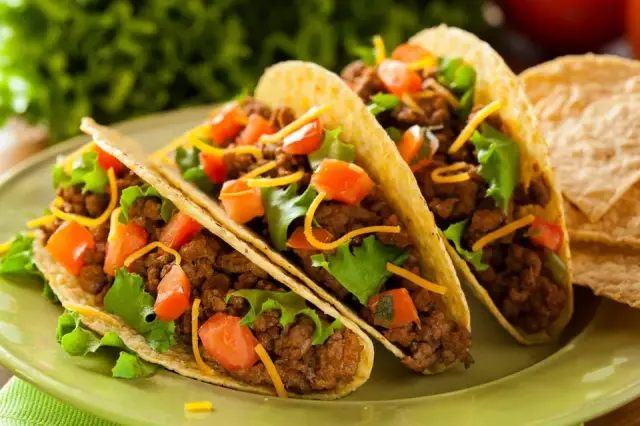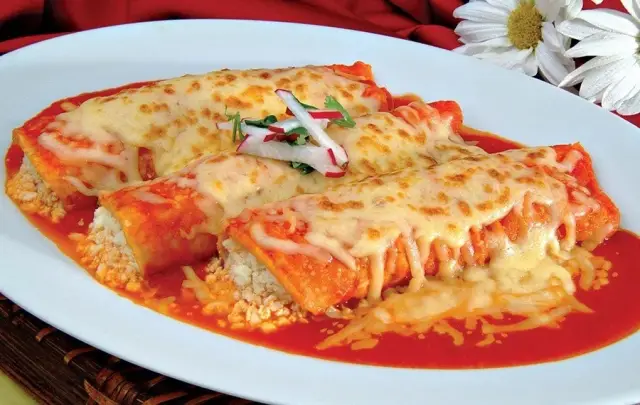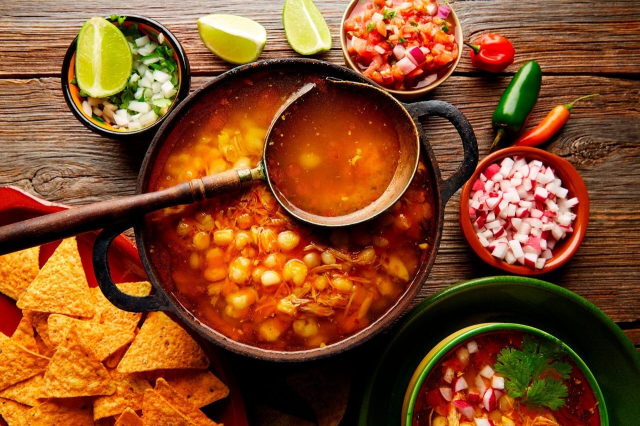Mexican cuisine is one of the richest, most varied, and renowned in the world. Since 2010, it has been part of UNESCO's Intangible Cultural Heritage of Humanity , and for good reason: every Mexican dish tells a story, reflects ancient traditions, and is full of flavor. Beyond its ingredients, Mexican cuisine embodies the soul of a nation that has managed to preserve its roots through food. Each state, city, and even family has its own special way of preparing its typical dishes, making gastronomy a vehicle of identity and culture.
In this article, we'll explore Mexico's iconic dishes , from the popular tacos to traditional mole, not to mention lesser-known regional gems that will surprise you. Get ready for a gastronomic journey through ancient ingredients, unique preparation techniques, and a cultural context that gives meaning to each recipe.
Tacos: the king of Mexican food
Variety and versatility
Tacos are undoubtedly one of Mexico's emblems . Their versatility makes them a ubiquitous dish: you can find them at street stalls, local markets, and gourmet restaurants, even adapted to modern trends like veganism. They're the perfect example of how a simple preparation can conquer palates around the world.
Tacos have a deep history dating back to Mesoamerican cultures. Already in pre-Hispanic times, corn was the staple food, and tortillas were prepared to wrap other foods. This practice evolved over time to become the wide variety of tacos we know today.
Popular types of tacos:
Tacos al pastor (Lebanese-inspired with marinated pork)
Carnitas tacos (pork slow-cooked in its own fat)
Barbacoa tacos (cooked in an earth oven)
Golden tacos (fried, filled with chicken, potato or meat)
Main ingredients
Corn or flour tortillas
Various meats (pork, beef, chicken)
Salsas, onion, cilantro, lemon and chilies

Mole: the flavor of the festivities
An ancestral dish
Mole is a complex blend of chilies, spices, seeds, chocolate, and other ingredients , some of which may seem contradictory, but which achieve an exquisite harmony. There are many regional variations, with mole poblano being one of the best known. Its preparation can include up to 30 different ingredients and requires hours of preparation, making it a recipe of respect and ceremony.
Mole is believed to have originated in the convents of Puebla during the colonial era, a fusion of native and European ingredients. However, there are also records that point to similar preparations dating back to pre-Hispanic times.
When is it consumed?
Mole is served on special occasions: weddings, baptisms, patron saint festivals, and especially during the Day of the Dead , when offerings are made to the deceased on traditional altars. It is a symbol of celebration, respect, and family unity.
Tamales: tradition wrapped in leaves
Origin and meaning
Tamales are one of Mexico's oldest foods. Made from corn dough filled and steamed in corn or plantain leaves, they have a strong spiritual and festive symbolism. In many indigenous cultures, corn is considered sacred, so wrapping and preparing it in a special way has profound meaning.
Variations by region
In every corner of the country, tamales have a different interpretation:
Oaxacan tamales (wrapped in banana leaves with black mole)
Sweet tamales (with raisins, cinnamon and anise, pink)
Uchepos (made with tender corn, typical of Michoacán)
Zacahuil (giant tamales from northern Veracruz and the Huasteca)
They are consumed on special dates such as Candlemas (February 2) and during family celebrations.
Pozole: pre-Hispanic heritage in a bowl
Basic ingredients
Pozole is a thick cacahuazintle corn soup cooked with pork or chicken and accompanied by lettuce, radishes, onion, oregano, lemon, and chili powder. It takes a long time to prepare, but the result is comforting and full of flavor.
Types of pozole
White pozole: basic version, very common in Mexico City
Red pozole: typical of Guerrero, with guajillo or ancho chili
Green Pozole: originally from Morelos and Guerrero, with pumpkin seeds and epazote
This dish is not only delicious, it also represents a cultural heritage. It is believed that it was originally prepared for indigenous rituals with human flesh (according to colonial sources), but this practice was replaced with pork with the arrival of the Spanish.
Chiles en nogada: the pride of Puebla
This sophisticated dish symbolizes the colors of the Mexican flag: green (poblano pepper), white (walnut sauce), and red (pomegranate seeds). According to legend, it was created by Augustinian nuns in honor of Agustín de Iturbide.
It's especially prepared in August and September, coinciding with the pomegranate and walnut season. It's a dish that requires finesse, expertise, and fresh seasonal produce, making it a patriotic treat.
Enchiladas: corn, chili, and creativity
Enchiladas consist of tortillas filled with various ingredients, tossed in sauces ranging from traditional mole to green, red, or creamy sauces. They are accompanied with sour cream, cheese, and onion, and can be served baked or fried.
Popular types of enchiladas:
Enchiladas Suizas: with creamy cheese sauce
Green enchiladas: with tomatillo sauce and serrano pepper
Enmoladas: bathed in mole, typical of Oaxaca and Puebla
They are versatile and perfect for both a festive breakfast and a hearty dinner.

Other representative dishes by region
| State | Typical dish |
|---|---|
| Yucatan | Cochinita pibil |
| Oaxaca | Tlayudas, 7 moles |
| Jalisco | Birria, drowned cake |
| Veracruz | Veracruz-style fish |
| Chiapas | Chipilín tamales |
| Baja California | Fish tacos |
What makes Mexican food unique?
Mexican cuisine is notable for its intensive use of corn, chili, and beans, ingredients that form the basis of many dishes. It is also notable for its artisanal sauces, its profound symbolic meaning in rituals and celebrations, and the richness of flavors derived from its geographical diversity.
Another distinctive factor is the fusion of indigenous and Spanish elements: cheese, pork, wheat, and dairy products were integrated into pre-existing recipes, creating a unique mestizo cuisine.
To taste Mexico without leaving home
Today, you can prepare many of these dishes from home thanks to recipes available online. Traditional cooking blogs, YouTube channels, and social media are full of tutorials that allow you to bring the flavors of Mexico to your table. Additionally, international markets offer key ingredients such as dried chiles, tamale dough, and artisanal tortillas.
The heart of Mexico is in its kitchen
Mexican cuisine is much more than food: it's identity, history, and a living culture. Each of Mexico's signature dishes is a gateway to its roots, its people, and its geography. Whether you visit Mexico or try these dishes in your hometown, every bite will connect you with a nation that cooks with soul, flavor, and pride.
Do you dare to try them all?
